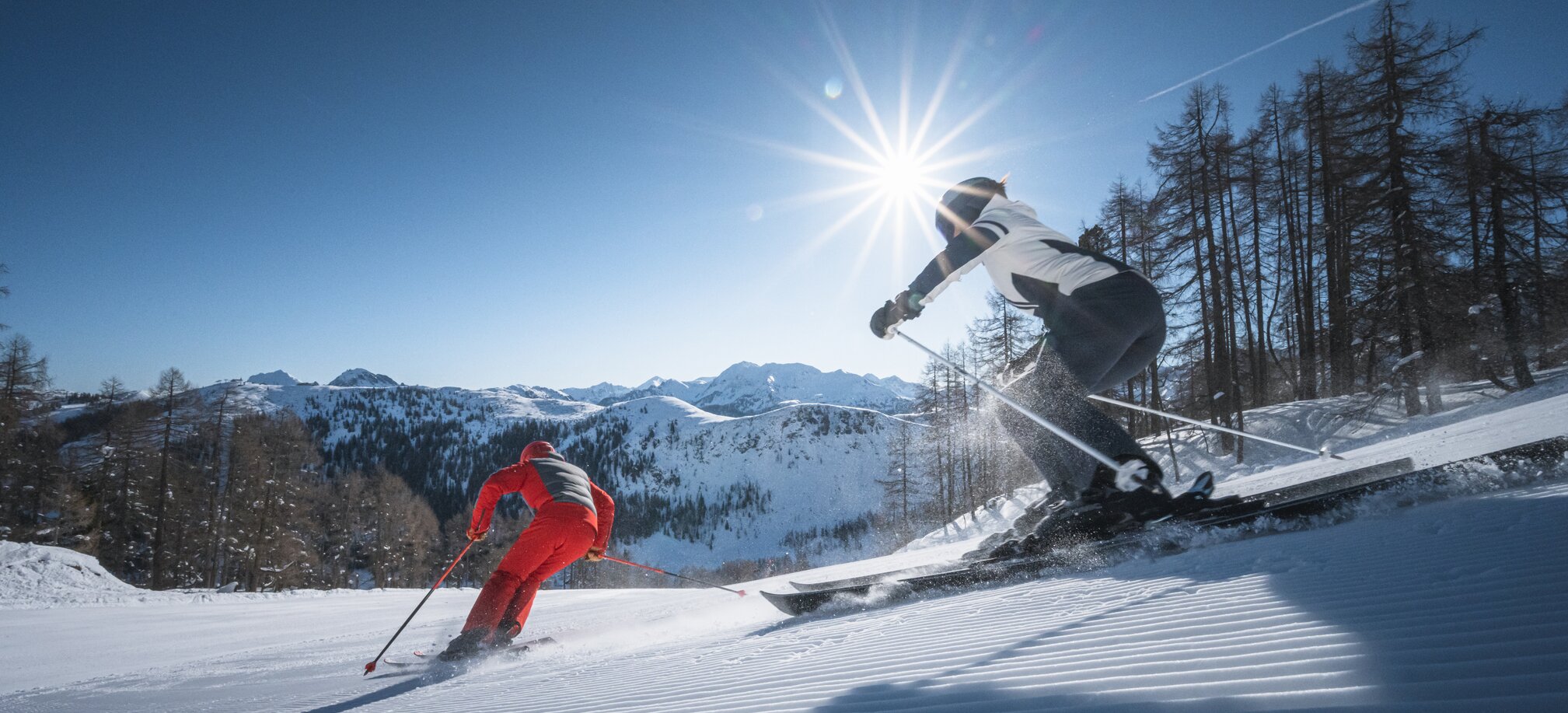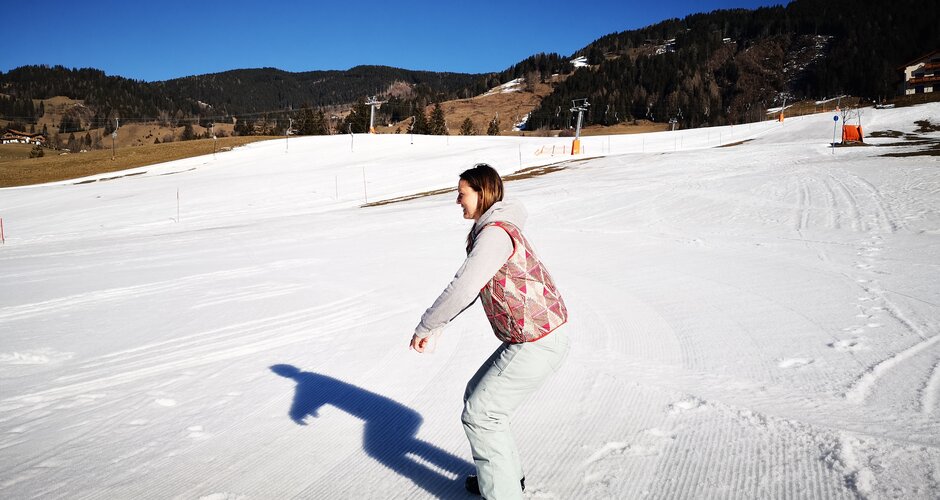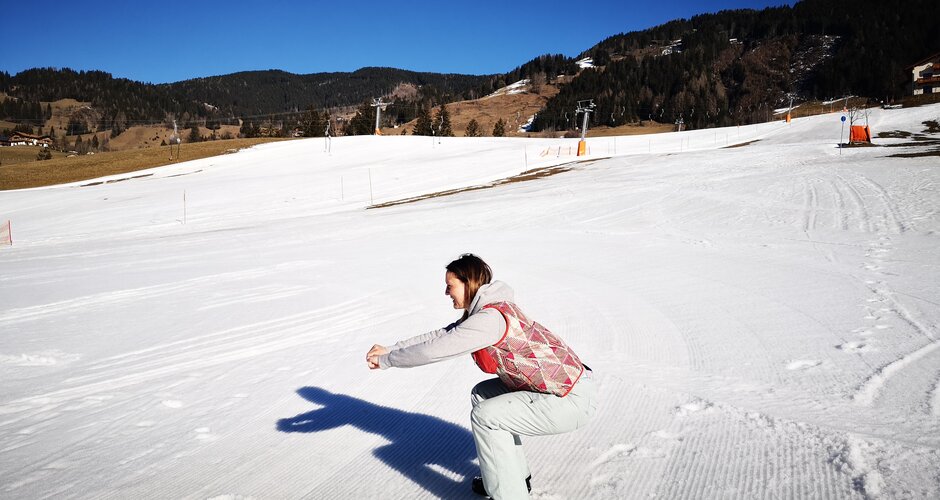Let's start with the benefits of the squat. The following muscle groups are used and trained with it:
- glutes including crack butt result
- hamstrings and quads
- calves
- back extensors
- abs
If all those muscles aren't enough reasons to spend every day a little bit in the squat, then here are a few more benefits for you:
The squat promotes mobility in the hip, knee and ankle joints. Overall, there is better blood circulation in the muscles and this is also very important for the transport of blood and waste products. These are all important physical processes that you need when skiing. Thus, the squat is also ideal for warming up before skiing.
Now the question is, how many times should you squat per day?
It is best to adapt this to your fitness level. My recommendation is 3x15 repetitions, because this series is ideal for strength/endurance training. You can also start with 10 squats in a row. Do them slowly at first so you can focus on technique.
You can also increase the intensity by staying 10-20 seconds in the squat and make very small rocking movements up and down.
It’s the easiest way to start with your squats in the morning while brushing your teeth. But squats also have their advantages in the evening: performed shortly before going to bed, they have a positive effect on sleep, as the previous tension in the body increases the ability to relax. Especially after a long day at the desk, activity in the evening brings better relaxation.
The technique of the squat is particularly important in order to not stress the knees incorrectly. Here is my brief explanation and what I think you should pay attention to:
- Find a place where you can stand up straight and upright. I chose the ski slope. Maybe you know this slope in Ski amadé? If so, then write to me right under the blog article. I am curious.
- Legs are hip-width apart and toes point forward. No turning of the feet outwards or inwards.
- The upper body always stays straight, so no hunched back!
- The knees NEVER go past the toes. They ALWAYS stay in line with your toes or behind your toes when you look down at your feet.
- The bottom goes down so that it forms a straight line with the knees and thighs, which is parallel to the floor. No deeper drop.
As I said, it is very important to learn the technique in the beginning and therefore I suggest starting with a slow execution.
I wish you a lot of fun with the implementation!





